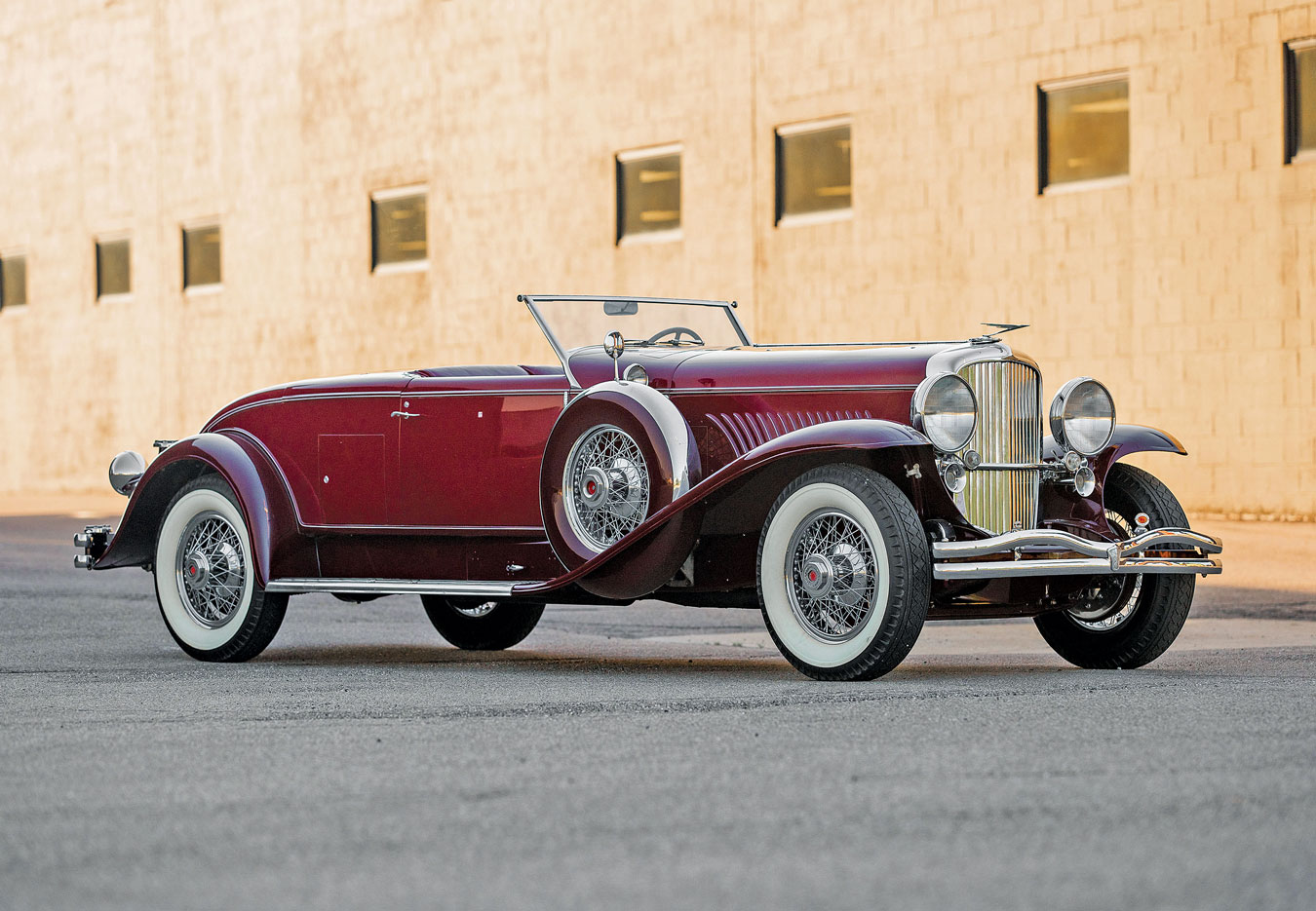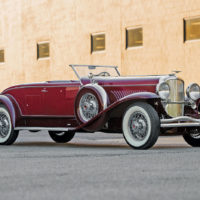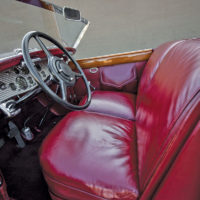SCM Analysis
Detailing
| Vehicle: | 1935 Duesenberg Model J Convertible Coupe by Rollston |
| Years Produced: | 1929–37 |
| Number Produced: | 472 |
| Tune Up Cost: | $1,000 |
| Chassis Number Location: | Factory ID plate on cowl |
| Engine Number Location: | On the ear of the bellhousing, left side |
| Club Info: | Auburn Cord Duesenberg Club |
| Website: | http://www.acdclub.org |
| Alternatives: | 1928–30 Bentley 6½ Litre Speed Six, 1934–39 Mercedes-Benz 500K/540K 1930–31 Cadillac V16 roadster |
This car, Lot 252, sold for $4,680,000, including buyer’s premium, at RM Sotheby’s Monterey, CA, auction on August 19, 2022.
Duesenberg was the quintessential American luxury car of the 1920s and 1930s. Packard and Pierce-Arrow had their followings, but nothing matched the sheer power and panache of a Duesie. The cars were like a rogue in a tuxedo, posh on the outside, lithe and muscular underneath.
Fatefully introduced in 1929, just as the stock market crashed, many examples benefited from the best of bespoke coachwork, products of the finest American and Continental craftsmen. All Duesenbergs were at least semi-custom. Many were one-offs. Their owners were a who’s who mélange of high society, celebrated Hollywood stars, European royalty, captains of industry and a coterie of fabulously wealthy individuals.
Duesenberg print ads in magazines such as Fortune and Town & Country didn’t show the car. Instead, there were artist’s renderings of scenes — a distinguished man seated by the fire in his elegant home library or a slender lady addressing her gardener — with the simple headlines, “He Drives a Duesenberg” or “She Drives a Duesenberg.” The company hoped to build 500 Model Js, JNs and SJs, but sales slowed as the Great Depression dragged on and there was no money for a totally new model. Bodies were sometimes changed, by dealers or the factory, in an effort to update a car, or to match the whims of a new owner.
She does drive one
RM Sotheby’s research noted that, according to the late Duesenberg archivist Ray Wolff, historian Don Howell wrote that this Rollston roadster body was first used on a supercharged SJ model, J527. The car was sold in December 1933 to Isabel Townsend Pell of New York City, a niece of the heiress to International Nickel. Said to be a strong, independent woman, she worked in the fashion industry. In other words, she fit Duesenberg’s marketing image to a T.
In 1935, after Miss Pell had problems with the car’s supercharger, Duesenberg transferred her Rollston body to this new long-wheelbase chassis, 2556, engine number J550. It has remained that way ever since. Howell noted that Rollston’s distinctive “shovel” or “sugar scoop” fenders, with flared open tips, were installed at this time. This fender design was only used on four Rollston-bodied Model Js.
Ms. Pell went to France in 1939, where she served in the French Resistance, using the code name “Fredericka.” She took the Duesenberg with her. When the car was certified by the ACD Club in 2005, Fred Roe, the club’s marque historian, noted, “I saw this car in spring 1945 in the ‘New York Garage’ in Cannes, France, while in the army. Germans had taken tires and wheels…”
More provenance
The next known owner was a Frenchman. He took it to Havana, Cuba, in 1947, but died shortly after arrival. The Duesenberg reportedly languished on the docks there until 1950, when a local dealer sold it. The car passed through two more owners before it left Cuba in 1952, after Paul V. White of Florida purchased it for $1,500.
He sold it to Duesenberg enthusiast Allen Thurn of Bethlehem, PA, in 1955. In 1958, Jim Hoe, the legendary Connecticut Duesenberg mechanic, drove the car to Los Angeles for a cosmetic restoration in J.B. Nethercutt’s shops. The car was subsequently judged Best of Show at the Classic Car Club of America’s 10th Annual Meeting at Buck Hill Falls, PA, in 1962. A more thorough restoration was completed in 1965 by Mervin “Beaver” Colver, work that has held up extremely well.
In 1966, Thurn sold the car to a classic-car dealer, George Huguely of Washington, D.C. The Model J was subsequently acquired in October 1967 by Terence Adderley, where it has remained ever since.
This car received CCCA Senior Emeritus status in 1976. It’s in all the books: Fred Roe’s Duesenberg: The Pursuit of Perfection, Josh B. Malks’ The Illustrated Duesenberg Buyer’s Guide, and it was the cover car for Dennis Adler’s Duesenberg book. It has appeared in Automobile Quarterly, and in Ralph Stein’s The Great Cars. With minor changes to its design, it was the basis for Monogram’s “The Classic Duesenberg SJ Roadster” model kit.
A really old restoration
The sale price of nearly $4.7 million is a heady sum for a Duesenberg (although a freshly restored example exceeded $5m last year). It’s an especially significant amount for a car that was last restored before many of today’s collectors were born. So why did it sell so well?
First, it has a nearly unbroken chain of ownership history — and it’s an interesting one. Second, it was restored decades ago, but by the best in the business. It remains in great shape mechanically thanks to Brian Joseph, who worked on most of Adderley’s cars. We’d expect it runs and drives the way a perfectly maintained Duesenberg should. The car is not “original,” but those well-worn parts and that mild patina are a badge of honor. Third, during its 55-year residency in the Adderley Collection, the car was rarely shown. It has never attended the Pebble Beach Concours d’Elegance, probably because it’s an older restoration.
With its raked windscreen and those fenders on the long-wheelbase chassis, it’s a magnificent car. If the new owner wants to take it to any major concours, including Pebble Beach, it will be warmly welcomed. This car was well sold but also very well bought. This Duesenberg’s many well-cared-for years have finally paid off. ♦
(Introductory description courtesy of RM Sotheby’s.)



